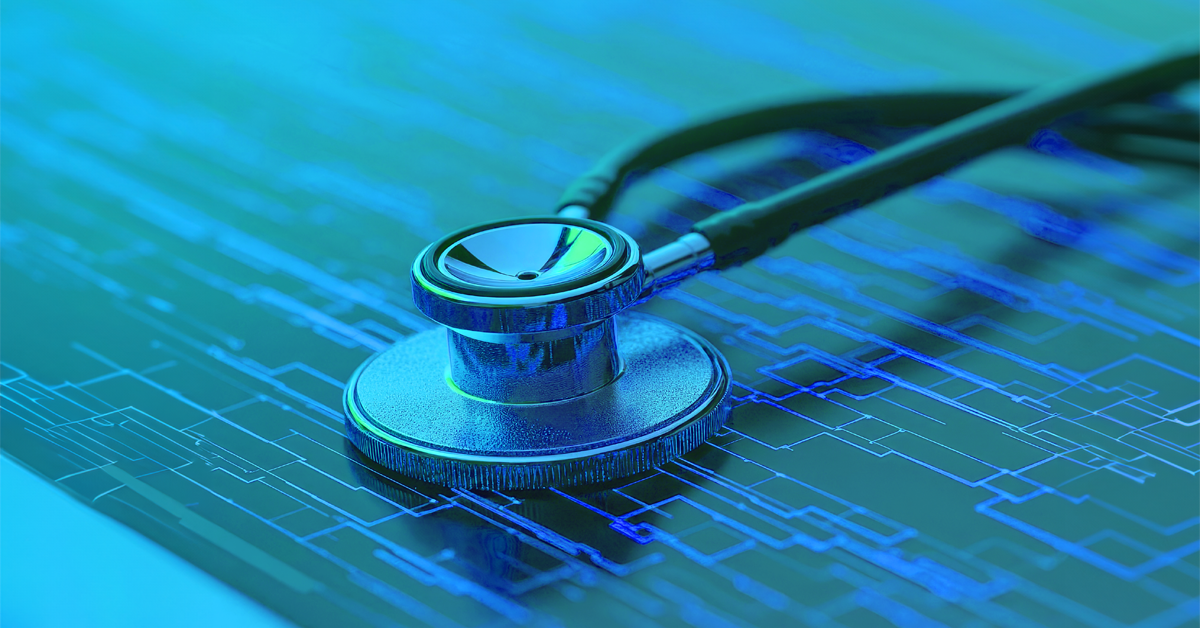
Reimbursement for AI in Echo: Navigating the Landscape
- | By Ultromics
Dr Ross Upton PhD, Founder, CEO and Chief Scientific Officer, Ultromics, and AI Co-Chair, HeartShare, NIH
Innovative technologies such as AI-driven echocardiography diagnostics (AI Echo Dx) are transforming the healthcare landscape, enhancing patient care, and streamlining clinical pathways. For developers of new technology, however, the practicalities of moving their innovations into clinical use can be monumental due to the challenges of navigating the complexities of medical device reimbursement.
In this article, Ross Upton, PhD, CEO and Founder of Ultromics, and Heather Brown, PhD, reimbursement consultant from Ultromics, break down the reimbursement landscape and explain how key understandings can ease the often arduous market access journey.
Understanding the Reimbursement Landscape
Securing Food and Drug Administration (FDA) clearance for a new medical device is essential—but it is only the first step in driving adoption in routine practice. Unlike obtaining FDA clearance, reimbursement is not a binary decision but rather a multi-step process and a multi-year journey consisting of three key elements:
Coding: Coding establishes standardized descriptions with alphanumeric codes used to report healthcare services and procedures to payers for reimbursement. While having a code does not guarantee coverage or payment, it is an essential component in the pathway to broad reimbursement.
Coverage: Coverage is the component where payers state that a service is medically necessary, and they are willing to pay for it. Coverage is typically issued as a medical policy that identifies appropriate clinical indications for a service and may include restrictions (i.e., when the service will not be reimbursed). These policies are typically based on peer-reviewed evidence demonstrating clinical outcomes.
Payment: Payment is the amount a payer is willing to pay. Notably, the payment for each payer will vary; for example, Medicare will have established rates, while commercial payers may pay based on a percentage of billed charges. Furthermore, the payment responsibility may be shared between the payer and the patient in the form of copays and/or deductibles.
Understanding and navigating these three components is essential for medical device companies seeking to secure adequate reimbursement, as the availability of proper coding, favorable coverage decisions, and sufficient payment, directly impacts the adoption of new medical technologies.
Coding
For medical devices, the appropriate code must be assigned to enable providers to bill for their use. There are several coding systems relevant to medical devices, including Current Procedural Terminology (CPT) codes maintained by the American Medical Association, Healthcare Common Procedure Coding System (HCPCS) codes maintained by the Department of Health and Human Services, and International Classification of Diseases (ICD) codes.
In Ultromics’ case, EchoGo® Heart Failure was first assigned an HCPCS C-code by CMS. However, there are limitations to this code, including that only hospitals can bill it, while physicians cannot. Therefore, we worked with the AMA and supporting societies through the CPT process to establish a CPT Category III code that will be billable by physicians beginning January 1, 2025. Moving from a temporary Category III code to a permanent Category I CPT code is key to enabling the widespread adoption of a new medical device.
The absence of a correct code can prevent payment for a device or service, making it essential for medical device companies to identify existing applicable codes or recognize the need to create new or revised codes as part of their reimbursement strategy. Understanding the intricacies of coding is vital for device manufacturers, as it directly impacts the ability of healthcare providers to submit claims for reimbursement related to using their products.
Coverage
Without coverage from the Centers for Medicare and Medicaid Services (CMS), even the most innovative, advanced solutions will struggle to get off the shelf. There are numerous pathways to securing Medicare coverage. The first is a National Coverage Determination (NCD). This binding decision, made by the Centers for Medicare and Medicaid Services (CMS), is based on evidence of clinical outcomes data and cost-effectiveness. Where an NCD is not in place, Medicare Administrative Contractors (MACs) at the local level can make a Local Coverage Determination (LCD) based on regional clinical data. Where neither an NCD nor an LCD has been made, MACs can also make individual case-by-case coverage decisions. Securing CMS coverage in any of these forms can be a challenging process and may require years of work with CMS.
Additionally, the developer needs to establish coverage with many commercial payers to ensure that each customer provider has the majority of their claims covered. In all cases, the procedure must be deemed reasonable and necessary as determined by a review of available published evidence. The onus is on the developer to gather the information needed for the payer to make an informed decision. By employing a strategy of data collection, evidence publication, and wider medical community advocacy, device companies can accelerate the process to drive adoption of their innovative solutions.
Payment
Finally, securing an acceptable payment amount from each payer is also necessary. Even after coding and coverage are in place, clinical adoption may still be impeded if the payment does not cover the cost of the service.
The mechanisms by which payment is determined can vary by payer as well as by the site of service (e.g., depending on whether the procedure is performed in a hospital setting or a physician’s office). When bringing EchoGo® Heart Failure to market, for example, Ultromics secured New Technology Add-On Payment (NTAP) designation for hospital inpatients under the Inpatient Prospective Payment System (IPPS). NTAP allows for additional payments to be made for “new technologies that demonstrate substantial clinical improvement over existing treatments” for up to three years following FDA approval.
To establish reimbursement for the many patients seen in the outpatient setting, Ultromics worked with CMS to assign the C-code for EchoGo® Heart Failure at an appropriate payment level. Therefore, even within the Medicare system, payments may differ between inpatient and outpatient settings.
Lastly, commercial payments will differ from Medicare. Frequently, commercial payments in the outpatient hospital setting will be determined based on the hospital’s chargemaster. For that reason, it is important for developers of new technology to be willing to meet with revenue cycle teams of the provider to describe the technology and the coding, clinical necessity, resources, and costs associated with the device.
Developing Strong Evidence is Essential
Developing and collating robust clinical studies and real-world data to demonstrate the device’s benefits is crucial to establishing a strong case both for CMS and for commercial payers to determine coverage policies. At Ultromics, we have published studies in leading journals, including the Journal of the American College of Cardiology (JACC): Advances, the Journal of the American Society of Echocardiography (JASE), and the Journal of Cardiac Failure, demonstrating the clinical efficacy of EchoGo® Heart Failure, with a prospective RCT about to commence. In addition, we recently presented late-breaking clinical trial results on EchoGo® Pro and EchoGo® Amyloidosis at the European Society of Cardiology 2024 Congress.
Publishing the data also helps to educate healthcare professionals (HCPs) on the efficacy and safety of the innovation, turning them into advocates for your solution. At the same time, developers should also seek to work with the patient community to understand how the solution is addressing their unmet needs. Notably, CMS decision-makers will take HCP and public opinion into account during the rule-making process, so ensuring alignment among the various stakeholders can help developers make their case for appropriate reimbursement.
Easing the Journey
There are no shortcuts when it comes to establishing reimbursement. It is an arduous process that will take years and require a significant investment in evidence development. Even the best new technologies will struggle to establish robust reimbursement if they have not adequately published clinical validation data.
Navigating the evolving AI medical device reimbursement landscape can be complex. But by understanding the three key elements and investing in evidence to emulate success stories, such as EchoGo® Heart Failure, medical device companies can enhance their market acceptance and reimbursement potential.
Stay tuned for more insights and strategies on navigating the healthcare landscape. Subscribe to my Substack for regular updates and advice from domain experts. For more information on advancements and future developments in AI-driven echocardiography diagnostics, read “10 Years in the Making: The Clinical Application of AI-Based Echocardiography Diagnostics”.
References
CMS. Medicare Coverage Determination Process. Available at: https://www.cms.gov/medicare/coverage/determination-process Last accessed July 30, 2024
Abràmoff, M. D., Roehrenbeck, C., et al. (2022). A reimbursement framework for artificial intelligence in healthcare. NPJ Digital Medicine, 5(1), 72
Curious about upcoming research and innovation?
Sign up to hear about the latest news.

